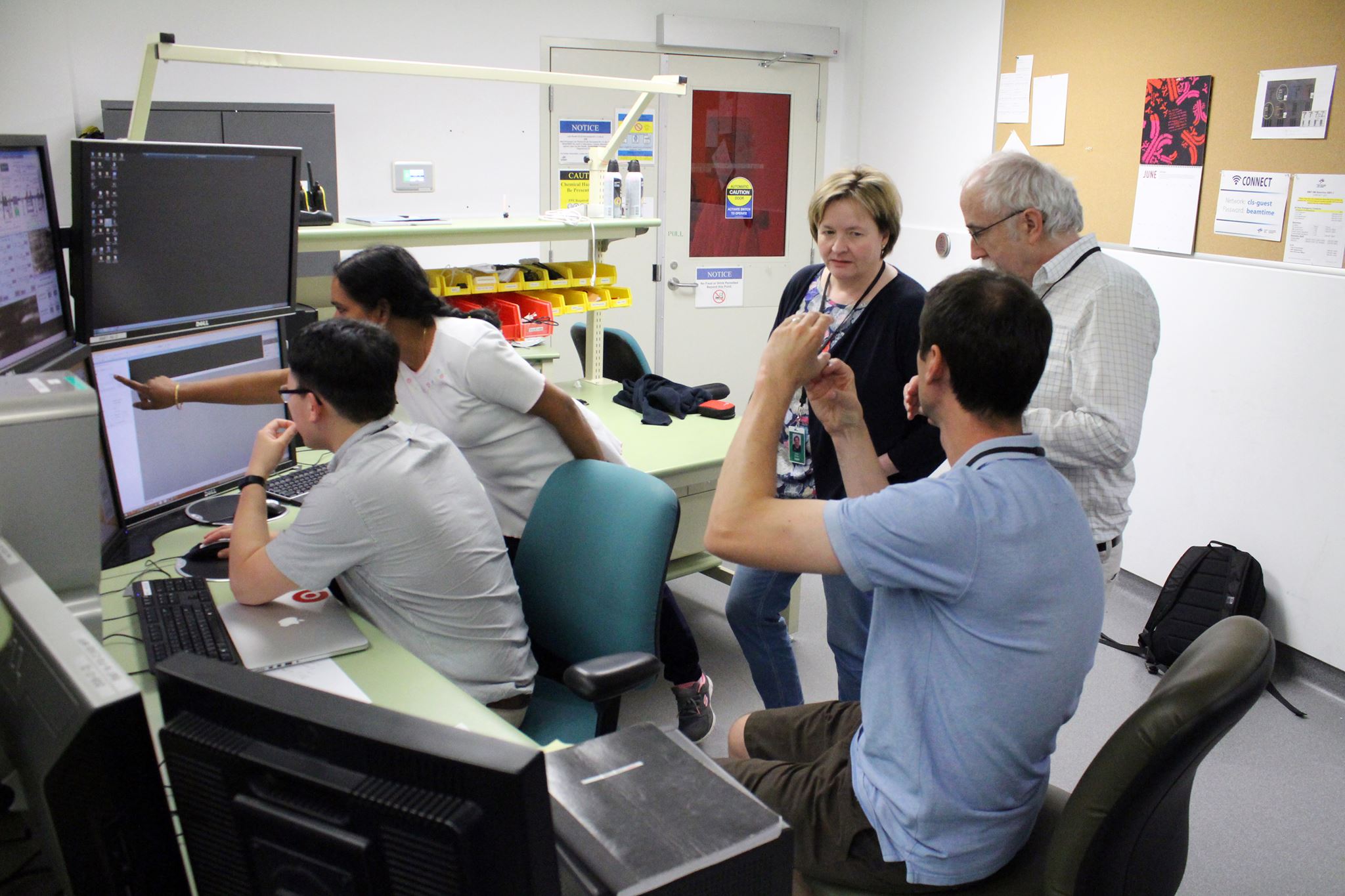Flower Architecture
Looking at the inner architecture of flower heads with University of Helsinki and University of Calgary researchers.
"Like the sky, where powerful telescopes, imaging and science make it possible to appreciate the beauty of the universe beyond the reach of the naked eye, our work will help appreciate and understand the world of plants by revealing an important aspect of their organization that only now we will be able to see," says the team.
Each of the flowers in the lead picture is a member of the Aster family - the largest family of flowering plants, which includes sunflower and gerbera. The Canadian Light Source will make it possible to visualize the architecture of heads with a high level of detail inaccessible using other types of tomography
University of Helsinki researchers Teng Zhang and Paula Elomaa and University of Calgary scientists Mik Cieslak and Przemyslaw Prusinkiewicz at the BMIT beamline. The team is using computed tomography (a CT-scan) to image the inside of Aster-family flowers, to visualize their hidden vasculature.
The research team discusses the placement of their sample in the beamline. Most scans take approximately 2 hours, and after further processing the team will have a three dimensional map of the internal structure of their flower samples.
Teng Zhang loads a sample into the beamline for analysis. The flowers his group is studying, members of the Aster family, look like individual flowers, but contain tightly packed assemblies of many small flowers with complex connective tissues.
This work first appeared as a post for the Canadian Light Source on Facebook.





